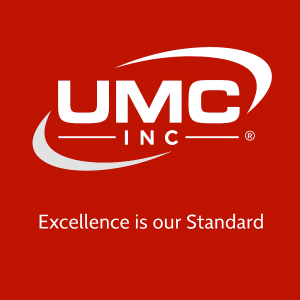 If you have ever walked a busy job site, you know how quickly delays can turn into serious setbacks. In multi-family construction, where timelines are tight and coordination between trades is critical, even small disruptions can cause significant ripple effects.
If you have ever walked a busy job site, you know how quickly delays can turn into serious setbacks. In multi-family construction, where timelines are tight and coordination between trades is critical, even small disruptions can cause significant ripple effects.
At UMC, Inc., we have spent over 50 years working on large-scale projects across the region. During that time, we have seen what works, what doesn’t, and what it really takes to keep a build moving forward. One thing has remained consistent across all successful projects. Mechanical coordination must be prioritized from the outset and maintained consistently.
Many delays are not caused by a lack of skill or effort. They often result from missing details during planning, unclear communication on-site, or systems being installed without a full understanding of how they interact with other trades. These missteps lead to rework, scheduling conflicts, and wasted resources.
Our approach begins long before materials show up on site.
Early Coordination Sets the Foundation
One of the most effective ways to prevent delays is by involving mechanical contractors early in the planning process. When we are included in pre-construction discussions, we are able to provide input that helps identify potential challenges and resolve them before they impact the schedule.
For example, clear planning around plumbing chases or duct routes can prevent costly adjustments once framing is complete. When everyone understands the layout and timing up front, the entire process becomes smoother. Early coordination also makes it easier to avoid spatial conflicts and stay within budget.
Identifying Constraints Keeps the Project Flowing
We use a process-driven approach known as the Theory of Constraint. This method helps us identify which part of the project has the greatest impact on the overall pace. Once that constraint is identified, we focus on keeping it clear and moving.
In multi-family construction, a single delay in one trade can affect the work of every team that follows. By applying this approach, we help ensure that the flow of work remains steady across all trades. It is not just about getting our job done. It is about supporting the momentum of the entire project.
Technology Enhances Efficiency and Visibility
One of the most valuable changes we have embraced in recent years is the use of digital tools on site. From mobile reporting and scheduling platforms to shared digital forms and punch lists, we use technology to increase transparency and responsiveness.
This helps project managers, GCs, and other trades stay informed in real time. It also allows us to catch and address issues quickly before they grow into delays. Communication improves, paperwork is simplified, and we gain better visibility across every stage of the job.
Culture Drives Accountability
Behind the systems and processes, it all comes down to people. At UMC, we have built a culture around ownership, accountability, and communication. Our team members are trained not just to perform high-quality work but also to understand how their work fits into the broader construction timeline.
This means they are thinking ahead, solving problems as they arise, and supporting their fellow trades. That kind of mindset cannot be taught overnight. It comes from a culture that values initiative and expects professionalism.
We Succeed When the Project Succeeds
We believe that success is not just defined by completing our portion of the scope. It is defined by whether the entire project is delivered on time, on budget, and to the highest standards. That requires every contractor on site to work together, communicate clearly, and stay committed to the shared outcome.
For our clients, this results in fewer delays, fewer change orders, and a smoother path from groundbreaking to occupancy.
If you are planning a multi-family development, consider the role mechanical planning plays in overall success. With the right coordination from the start, you can prevent delays, reduce risk, and bring your project across the finish line with confidence.






